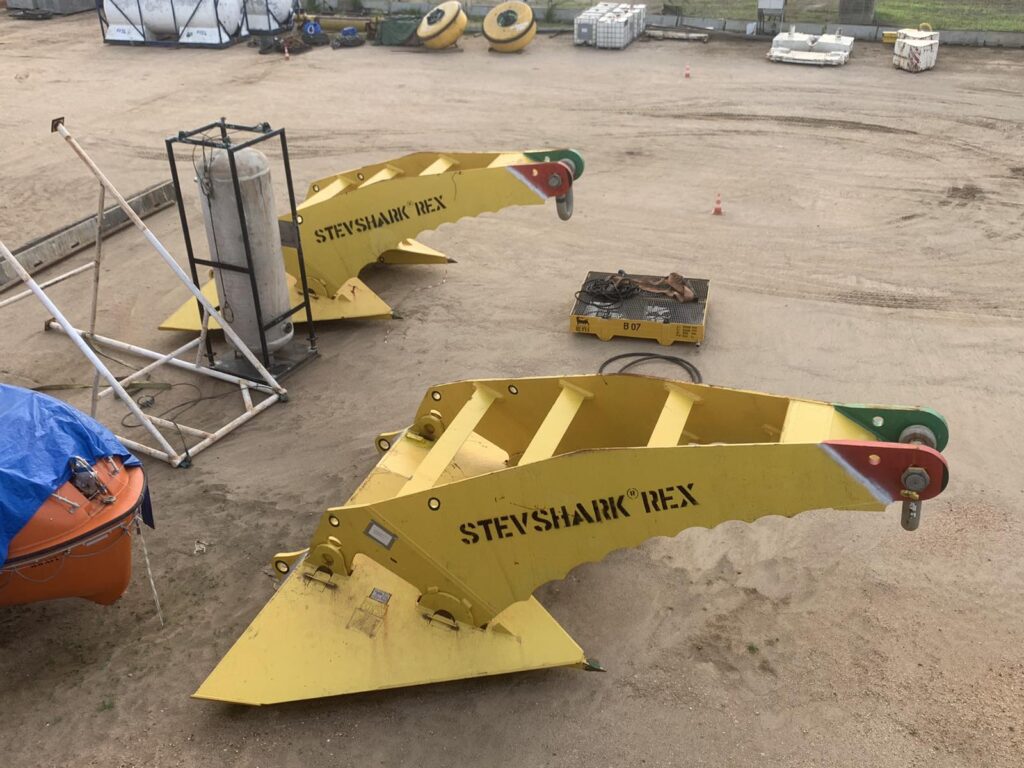

AHTS Vessel Engaged in Anchor Handling Operations: Offshore Support Vessel
By: Rogelio Arcega Jr. M.M.
Anchor handling is a specialized task performed by an anchor handling ships operated by well experienced anchor handling seafarers. These vessels are designed and equipped to handle large and heavy anchors used to secure offshore structures, such as oil rigs, floating production units, or drilling platforms. The successful execution of anchor handling operations requires careful planning, skilled crew, and adherence to safety protocols.
Here is an overview of anchor handling operations by an anchor handling ship:
- Preparing for the Operation: Before commencing anchor handling operations, the crew of the anchor handling ship must thoroughly prepare for the task. This includes reviewing the anchor plan, assessing weather conditions, ensuring stability calculation is suitable for the job and all necessary equipment and tools are in working order. The crew should also conduct safety briefings, and identify potential risks and hazards associated with the operation through a thorough risk assessment.
- Approaching the Location: Once the vessel reaches the designated location, the crew begins preparing for anchor handling deployment or recovery. This involves positioning the anchor handling ship correctly, taking into account factors such as water depth, current, wind speed, and direction. The crew must exercise caution to ensure the vessel is in a stable position before proceeding further.
- Deploying or Recovering the Anchor: Depending on the operation’s requirements, the anchor handling ship will either deploy or recover the anchor. Deploying an anchor involves carefully lowering it into the water, ensuring it reaches the seabed securely. On the other hand, anchor recovery entails lifting the anchor from the seabed and retrieving it onto the vessel. The crew must follow established procedures and use specialized equipment, such as winches and cranes, to perform these tasks safely and efficiently.
- Tensioning and Securing: Once the anchor is deployed or recovered, the crew proceeds to tension and secure it. Tensioning involves applying the necessary force to ensure the anchor holds firmly in place. This is critical for maintaining the stability and position of offshore structures. The crew utilizes hydraulic or mechanical systems to control the tension and monitors the anchor’s position using onboard navigation and positioning systems.
- Maintenance and Inspection: Anchor handling ships are responsible for maintaining and inspecting the anchors they handle regularly. This includes cleaning, greasing, and inspecting the anchor and its associated jewelries for any signs of wear, damage, or deterioration. Regular maintenance and inspection help ensure the anchors remain in optimal condition and can perform their intended function effectively.
- Safety Considerations: Safety is of paramount importance during anchor handling operations. The crew follows strict safety protocols, including the use of personal protective equipment (PPE), adherence to established procedures, and effective communication among team members. Regular safety drills and training sessions are conducted to prepare the crew for emergencies and mitigate risks associated with anchor handling operations.
- Environmental Protection: Anchor handling ships must also prioritize environmental protection during their operation. This includes minimizing the impact on marine ecosystems, complying with regulations regarding the discharge of pollutants or waste, and taking measures to prevent accidental spills or leaks. The crew follows best practices for environmental stewardship and works in collaboration with other stakeholders to ensure responsible anchor handling operations.

Anchor handling operations require expertise, precision, and a strong focus on safety. Through careful planning, skilled execution, regular maintenance, and adherence to safety and environmental protocols, anchor handling ships play a vital role in the offshore industry by ensuring the secure and reliable mooring of structures for various maritime activities.
– RAJ
Make your life worthwhile, and to the world before you. BE RELEVANT!
Quick Links
©2023. All Rights Reserved
